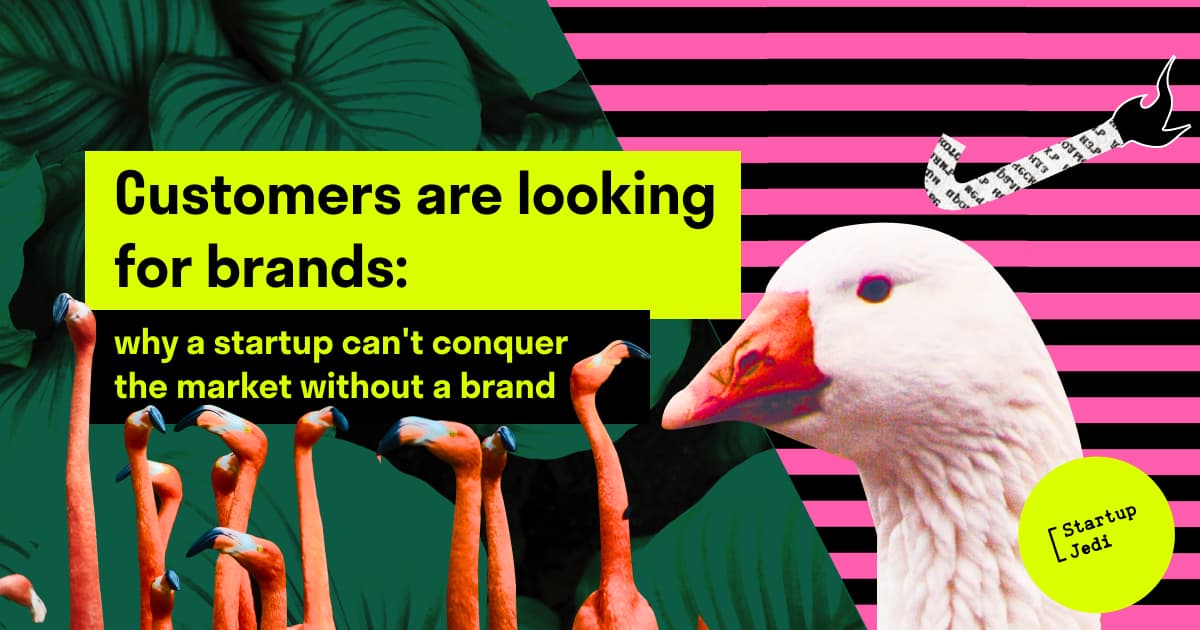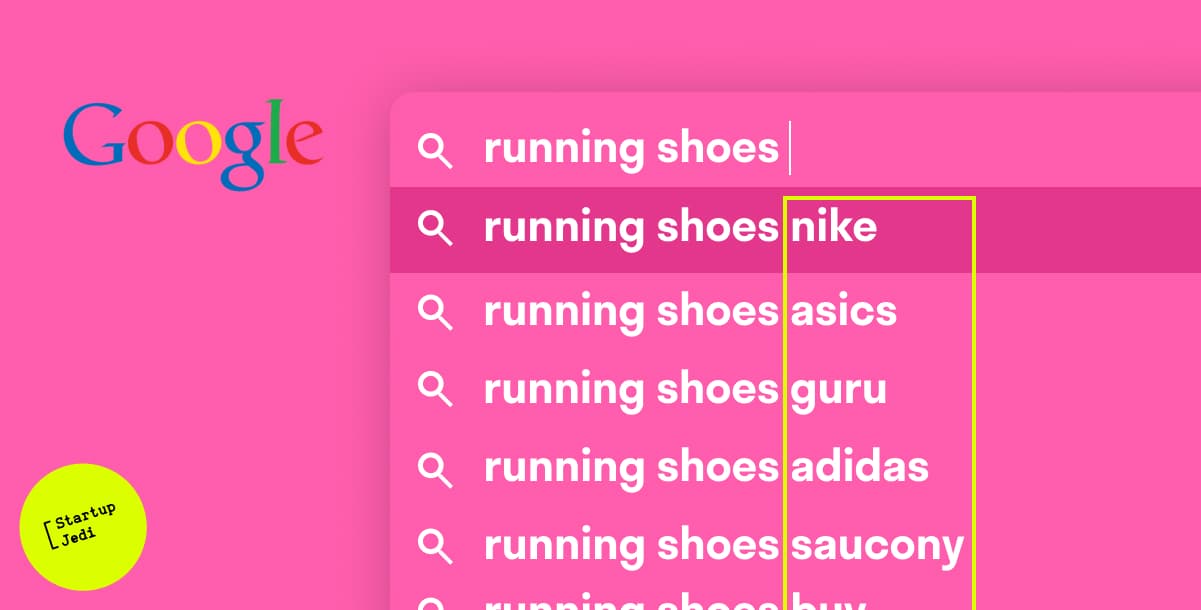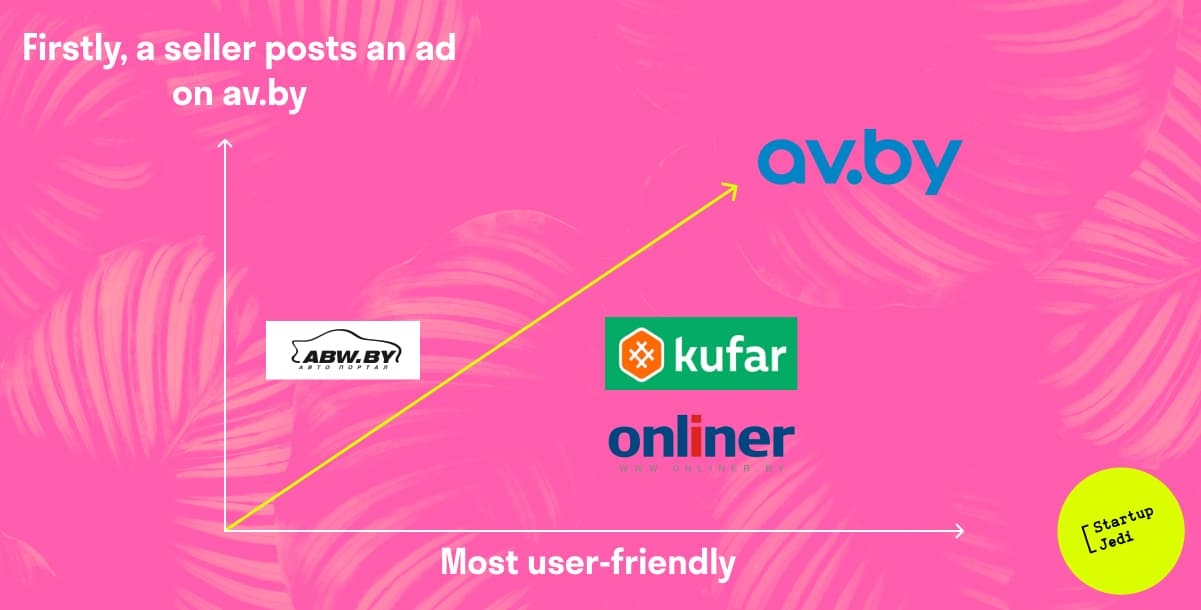
Startup Jedi
We talk to startups and investors, you get the value.

Startup Jedi
We talk to startups and investors, you get the value.
I recently decided to start running, meaning I had to buy the right running shoes. I did not know which ones to get, so I decided to google. Once I typed “running shoes” google suggested a bunch of brand names to autocomplete my search, because clients are no longer looking for just running shoes. They are looking for brands. And this makes sense, because since the 1860s, there have been more goods and services in the world than people actually need. There are millions of models on the market in a wide variety of colors and brands. And now it is the brand that helps to “make a difference” in the mind of the consumer.

This long intro was meant to draw your attention to the fact that you should never underestimate the influence of a brand, and start working in this direction as soon as possible. Darya Ksenzova is the brand manager of Zubr Capital Investment Company, the first company managing private equity funds in the Republic of Belarus. She will tell you about the importance of having a strong brand in today’s article and share some practical advice.
Daria Ksenzova has been building brands for the last 5 years. She has been working at Zubr Capital in brand development, brand strategy development and creation of a communication platform for portfolio companies. She is responsible for external and internal communications of Zubr Capital and the work of brand departments in portfolio companies. She has also worked as an editor of “My Business”, an educational TV project for the representatives of small and medium-sized businesses on the National State TV of Belarus.
...
Today reputation means a lot, and companies consider reputation risks when they decide how to act in a given situation. Here’s a recent example: big brands that refused to finance the Ice Hockey World Championship if it is held in Belarus. In a world where any news becomes public knowledge in a minute, image and reputation become serious assets.
Many young companies invest resources in product and sales, but often put off working with the brand, because they don’t think it’s important. And therein lies the big mistake. As with any process in business, a brand must be managed. Of course, the reputation can develop by itself, but be prepared that the result will most likely not please you.
It is better to start working with a brand as early as possible. You can’t create a brand overnight. Thus, you will need 6 months to 1 year to create an IT service brand, 2–3 years for a sustainable product brand and 2 to 5 years for a corporate brand. And it takes an average of over 10 years to form the brand of the state. So yes, it takes a lot of time, which means that you should have started yesterday.
...

For purely rational and pragmatic reasons. Let’s put aside all romantic illusions right away: everything you do in a business should ultimately work to increase its value.
For a business, a strong brand is an asset, an opportunity to increase added value almost indefinitely. This is especially evident in the example of clothing and accessories. For example, Farfetch sells a black Balenciaga baseball cap for $380. And the exact same noname brand cap will cost $10.
It’s 38 times more expensive just because of the brand! But with mass production, the cost of a baseball cap is unlikely to exceed a few dollars. This seems to be a very rational reason to build your company brand.
...
There are quite a few types of strategic control: state patronage (when the state lobbies for the interests of a company), a unique technology that is protected by a patent, or a network effect (like Telegram or Facebook, when companies develop due to the number of users). A brand is also a way to differentiate from competitors.
Even if someone on the market copies your product, customers will see it as something secondary and fake regardless of quality. This is an illusion that only a company with a strong brand can enjoy.
The third reason is the opportunity to get the best professionals on the market at the right price. Every startup is, first of all, the people who create it. And if you don’t want a high salary to be their only motivation, you have to create a brand.
...

As we said above, the process of building a brand is not a quick business. And the one who does a little every day is more likely to win than the one who spends a lot of money and energy once. But if I was asked what’s the most important thing to start with, I would say it’s positioning.
Positioning is the central element of the brand, which answers the question: “How are we better or different from others?”
This is the key idea that you must constantly and systematically communicate to the market. Positioning is a very practical tool that you will use in building your brand.
I like the comparison of positioning and taking the height in military strategy. When you are fighting (it does not matter — for territory, customers or markets), it is much more convenient for you to fight from a higher point, when the enemies are somewhere far below. Basically, positioning is similar to the process of taking the height, where you first define the necessary heights for yourself (= brand positioning), and then do your best to maintain them (= brand communication platform).
...

Alright, let’s get down to practice. I usually help the company shape positioning in a brand session (we also discuss many other issues), where work is carried out for several groups, which include the company’s founders, brand manager, marketers and other key employees.
Step 1. Determine the list of competitors.
Not necessarily all of them, 3 to 5 is enough. But these should be the ones you look up to.
Step 2. Brainstorm and determine what sets you apart from the competition or what you strive for to be different.
During a brainstorming session, it is important to write down all ideas, not criticize and try to develop not only your own thoughts, but also someone else’s. And most importantly, there is no need to compete with each other or between groups. You come together to come up with the best solution.
Step 3. Identify 2 or maximum 3 characteristics in which you are better than competitors or can become better in the foreseeable future.

Step 4. Make a graph with the selected characteristics along the axes.
The division on the axes can be arbitrary (for example, 25% -50% -75% -100%). Plot your competitors and your company on this graph. It is important that you are in the upper right corner, and all competitors are to the left or below. Here’s an example of what this might look like.
...

...
Once you’ve got the positioning, the stupidest thing you can do is drag it to one of the folders on your desktop and never open again. To make it work, you need to fulfill several conditions:
And then — systematic work, creativity and the result will follow!
Facebook: facebook.com/StartupJedi/
Telegram: t.me/Startup_Jedi
Twitter: twitter.com/startup_jedi
Comments